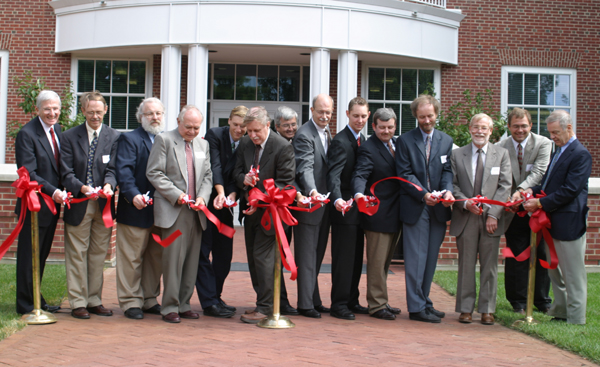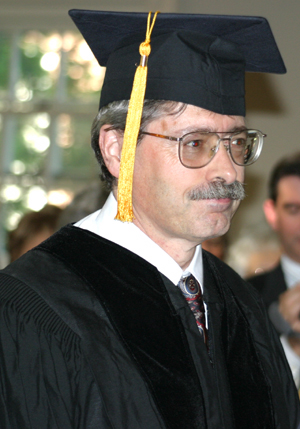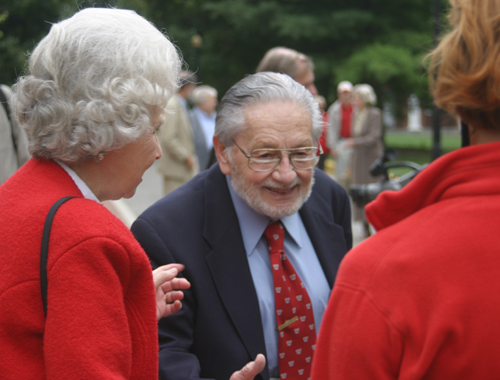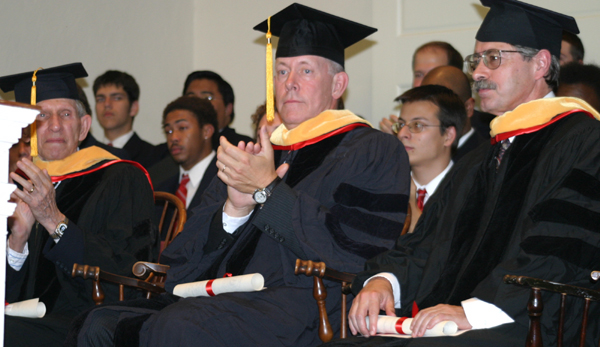 |
With a massive cold front bearing down from the west and the remnants of Hurricane Isobel whipping things up from the east, it looked like Indiana was primed for a bad weather sandwich. The forecasters said the two fronts would meet early Friday morning and clear out by noon. So convinced was I that they were wrong, I opted to watch four (4) different networks to get the skinny.
But with a crowd of over 200 guests on the Wabash College mall just as 12:00 noon approached on Friday afternoon, the sun peeked out and within minutes there was a brilliant blue sky and blazing sunshine.
Good thing, too. The crowd on the mall consisted of Wabash faculty, staff, students, alumni, and honored guests. They were on campus for the dedication and formal ribbon cutting for Wabash’s $30 million state-of-the-art science center, now home to the biology and chemistry departments.
The weather made it a particularly wonderful affair. But more than the sunshine, I appreciated eavesdropping on conversations as alumni and faculty reacquainted themselves with one another, caught up, and paid tribute to Wabash’s long history of educating young men in the sciences.
 Dr. Tom Roberts ’70 |
When I greeted him and asked him about his reactions to Wabash’s new building, he commented at length on how fine the labs are, how carefully the building had been planned, and how much space there was for students to interact with one another on an informal basis.
That seemed to be the theme of the day. A masterfully planned building that not only provides excellence for today but will serve Wabash for several generations to come.
 Jean Williams introduces Bill Haines to her grandson |
And as it always is, it was good to see and chat with emeritus mathematics professor Paul Mielke ’42, whose mastery of the history of Wabash continues to astound me.
There were young alumni back, too. I bumped into Jon Soverly, who graduated just last year and is now doing graduate work at Notre Dame; his research there has something to do with macular degeneration in fish and a long-term goal of finding the root causes of blindness.
Young Eric Shreve ’02 sneaked away from medical school in Cincinnati to witness this new era in science education at Wabash.
The event put on exhibit a broad mix of alumni doctors, researchers, and teachers, and Wabash’s astonishing track record in the sciences.
 Charles Miller ’49, Stephen Randak ’67, and Tom Roberts ’70 |
It was quite a sight, too, to look at several generations of science educators at Wabash, all lined up for the ceremonial ribbon cutting. Three legends—Aus Brooks, David Phillips, and John Zimmerman—will soon retire after more than three decades of service to Wabash. They were standing side-by-side with the new generation of faculty who will guide the biology and chemistry departments for years to come—David Polley, David Krohne, Bob Olsen, and Rich Dallinger.